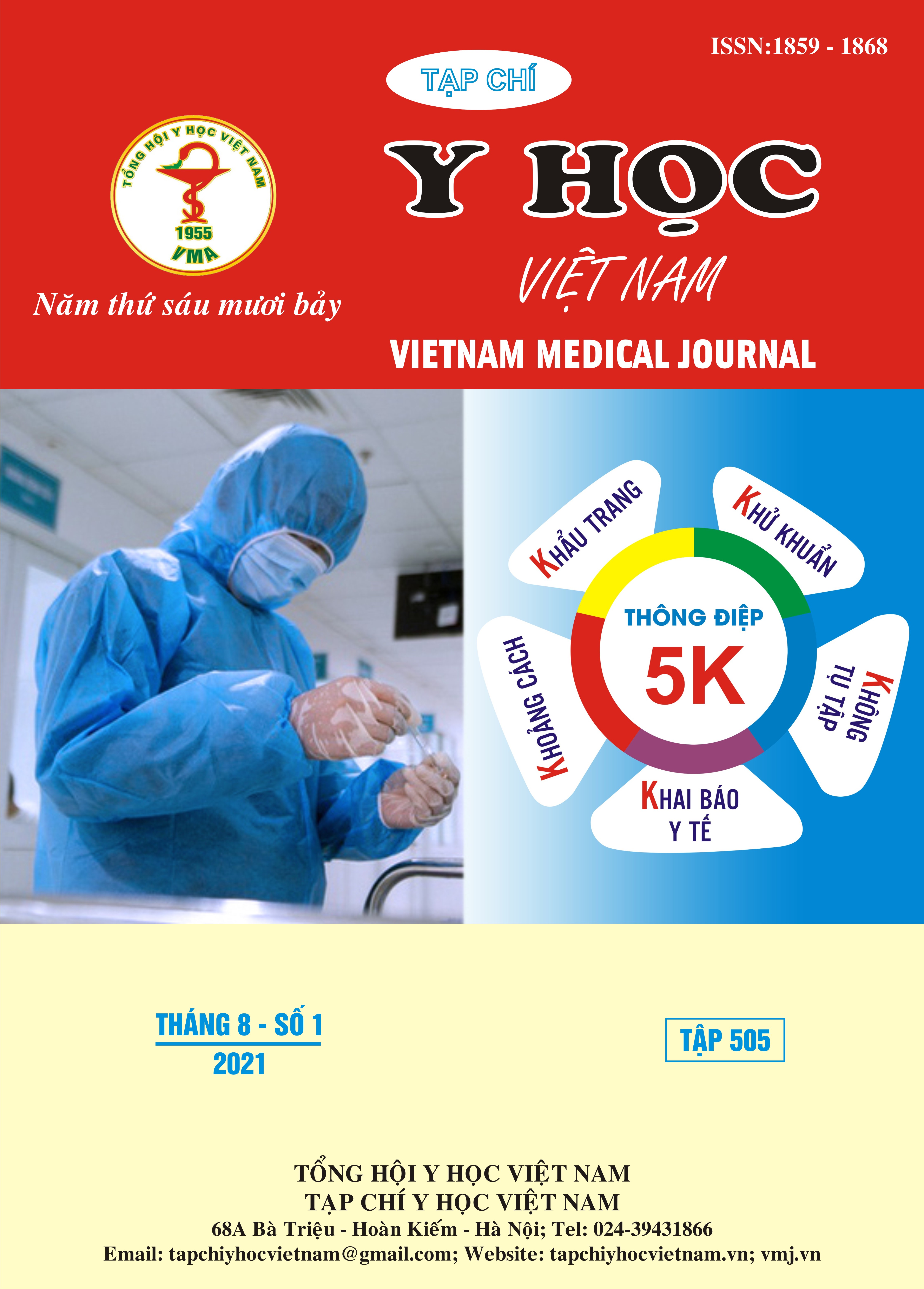THE VALUE OF MAGNETIC RESONANCE IMAGING 1.5 TESLA IN EVALUATING THE PERINEURAL AND VASCULAR INVASION OF NASOPHARYNGEAL CANCER
Main Article Content
Abstract
Purpose: Describe the imaging characteristics and value of magnetic resonance when nasopharyngeal tumor invades around the vascular nerves. Material and Methods: A prospective cross-sectional descriptive study was conducted out on 62 patients who were diagnosed with nasopharyngeal cancer underwent 1.5 TESLA MRI at Tan Trieu K Hospital from August 2020 to June 2021. Results: In 62 patients, 7 (11.3%) of patients clinically showed neuropathy; 18 patients had peri-nerve invasive magnetic resonance imaging, accounting for 29%; Kappa consensus index. 0.47 between clinical signs and MRI; 14 patients (22.6%) had invasive perivascular MRI, in which the rate of invasion around the carotid scapula was the highest (16.1%). Conclusion: The detection rate of perineural invasion on MRI is higher than on clinical signs, which is often observed in clinically asymptomatic patients. The rate of invasion around the carotid artery is the highest. MRI image of invasive nasopharyngeal tumor around the vascular nerve plays an important role in evaluating stage to plan treatment.
Article Details
Keywords
nasopharyngeal carcinoma, invades around the vascular nerves
References
2. Williams L.S., Mancuso A.A., and Mendenhall W.M. (2001). Perineural spread of cutaneous squamous and basal cell carcinoma: CT and MR detection and its impact on patient management and prognosis. Int J Radiat Oncol Biol Phys, 49(4), 1061–1069.
3. Yousem D.M., Hatabu H., Hurst R.W., et al. (1995). Carotid artery invasion by head and neck masses: Prediction with MR imaging. RADIOLOGY, 195(3), 715–720.
4. Pons Y., Ukkola-Pons E., Clément P., et al. (2010). Relevance of 5 different imaging signs in the evaluation of carotid artery invasion by cervical lymphadenopathy in head and neck squamous cell carcinoma. Oral Surgery, Oral Medicine, Oral Pathology, Oral Radiology and Endodontics, 109(5), 775–778.
5. Bùi Quang Vinh (2011). Nghiên cứu kết quả điều trị ung thư vòm họng giai đoạn III, IV (M0) bằng phối hợp hóa xạ trị gia tốc đồng thời 3 chiều theo hình dạng khối u tại Bệnh biện K từ 2007-2009: Phân tích thời gian sống thêm - Tạp chí Y học Thực Hành - Bộ Y tế.
6. Sanguineti G., Geara F.B., Garden A.S., et al. (1997). Carcinoma of the nasopharynx treated by radiotherapy alone: determinants of local and regional control. Int J Radiat Oncol Biol Phys, 37(5), 985–996.
7. Liu L., Liang S., Li L., et al. (2009). Prognostic impact of magnetic resonance imaging-detected cranial nerve involvement in nasopharyngeal carcinoma. Cancer, 115(9), 1995–2003.
8. Han J., Zhang Q., Kong F., et al. (2012). The Incidence of Invasion and Metastasis of Nasopharyngeal Carcinoma at Different Anatomic Sites in the Skull Base. The Anatomical Record, 295(8), 1252–1259.
9. Hanna E., Vural E., Prokopakis E., et al. (2007). The sensitivity and specificity of high-resolution imaging in evaluating perineural spread of adenoid cystic carcinoma to the skull base. Arch Otolaryngol Head Neck Surg, 133(6), 541–545.


